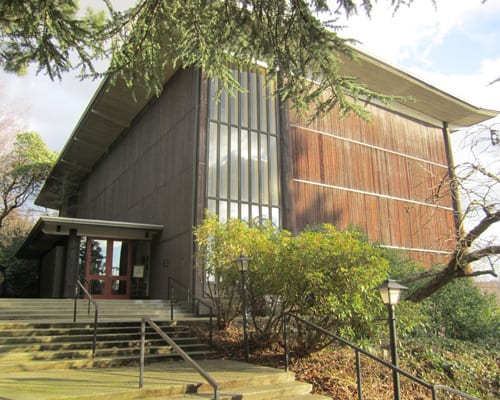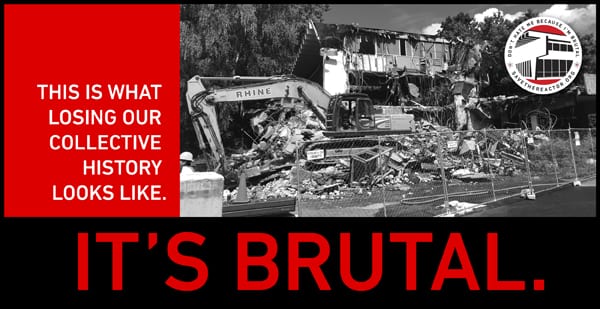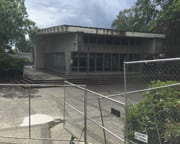Victory for Preservation in Supreme Court!

Screenshot of TVW video of State Supreme Court oral arguments, June 6, 2017.
An almost decade-long fight to protect historic resources at the University of Washington has culminated in a State Supreme Court ruling in favor of preservation advocates in the case—University of Washington vs. City of Seattle, Docomomo WEWA, Historic Seattle, and the Washington Trust for Historic Preservation. On July 20, the State Supreme Court of Washington issued its opinion—a precedent-setting unanimous decision—holding that the Seattle Landmarks Preservation Ordinance (LPO) applies to property owned by the University of Washington (UW). The Court ruled that the University of Washington is a state agency that must comply with local development regulations adopted pursuant to the Growth Management Act (GMA). The Court also held that the University is a property owner as defined by the LPO, overturning the trial court’s too narrow and technical decision that the UW is not an owner.
Oral arguments before the State Supreme Court took place on June 6 at the Temple of Justice in Olympia. If you really want to geek out on legal stuff, you can watch the proceeding on TVW here (about 45 minutes).
The importance of the State Supreme Court’s opinion in this case cannot be overstated. Read the entire opinion here and the article by the Seattle Times here.
In the week since the opinion was issued, Historic Seattle, Docomomo WEWA, and the Washington Trust for Historic Preservation have learned more about what this all means and what might be ahead. It’s our understanding that all state agencies (including state universities) must comply with local development regulations adopted pursuant to GMA. This is HUGE.
In the weeks and months ahead, we hope to meet with the City and the UW to discuss what this new world order will mean in the future. The UW recently released its 2018 Campus Master Plan. Will it be updated to reflect that the University is now subject to the LPO? Will the historic resource survey and inventory of the campus (soon to be completed) be updated to include language about local landmark or district eligibility? Will the University change its internal review of historic resources and transform it into a more public process, taking into account the very public landmark nomination and designation review process? These are just some of the questions we have.
The Supreme Court win won’t bring back the Nuclear Reactor Building (may it rest in peace), but it can help save other properties owned by UW in the future and may serve as an important precedent for future cases regarding historic properties across the state.
Historic Seattle thanks our attorney David Bricklin, partner organizations Docomomo WEWA and the Washington Trust for Historic Preservation, Assistant City Attorneys Roger Wynne and Patrick Downs, and the Seattle Historic Preservation Program staff for their hard work to secure this collaborative victory for preservation. We appreciate the support of the Department of Archaeology and Historic Preservation, Futurewise, and the Washington State Association of Municipal Attorneys who all submitted amicus briefs. We give a shout out to Abby Inpanbutr. Back in 2008, she was a graduate student in architecture at the UW. She alerted our three preservation groups about the threatened status of the Nuclear Reactor Building. Little did we know at the time that our advocacy efforts would be an almost ten-year fight. And finally, we offer a big thanks to our generous donors who have help to fund this effort!
Wait, there’s more! On October 6, in a ceremony in New York City, Historic Seattle, Docomomo WEWA, and the Washington Trust for Historic Preservation will be honored with a Docomomo US Modernism Award of Excellence in Advocacy for our Save the Reactor efforts. We wish the Nuclear Reactor Building had not been demolished, but its destruction was not in vain.
A version of this article was first published in the Docomomo US e-newsletter on July 20, 2017.
Photo: Advocates at a HeartBomb event celebrating the Nuclear Reactor Building, February 2015. The National Register-listed building was demolished by the UW in summer 2016. Photo by John Shea.

 On July 19, 2016, the Nuclear Reactor Building (NRB) was unceremoniously and quietly demolished by the University of Washington (UW). The passing of this historically and architecturally significant building ends a years-long battle between preservation advocates and the UW.
On July 19, 2016, the Nuclear Reactor Building (NRB) was unceremoniously and quietly demolished by the University of Washington (UW). The passing of this historically and architecturally significant building ends a years-long battle between preservation advocates and the UW.
